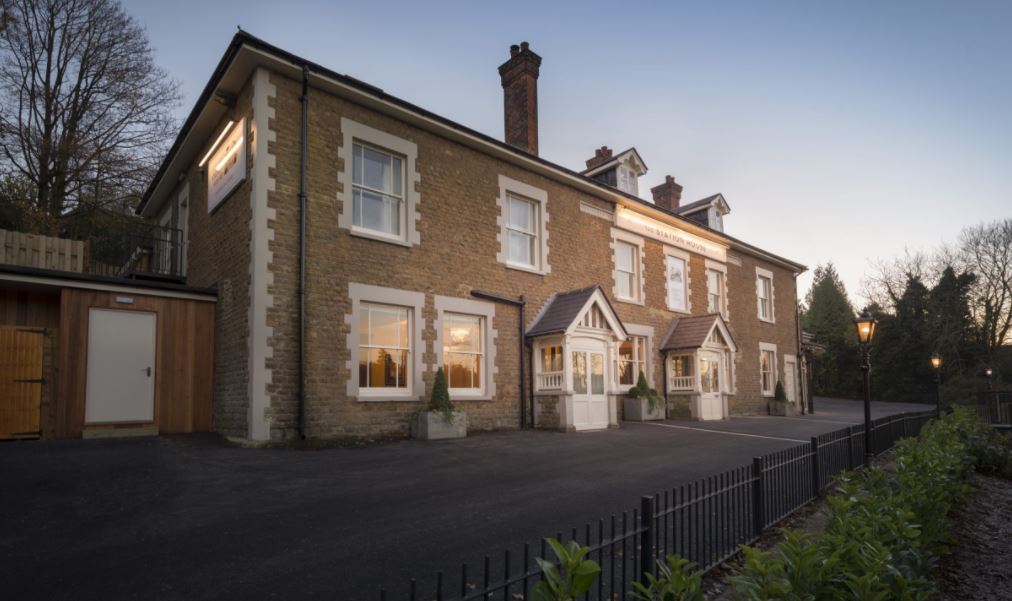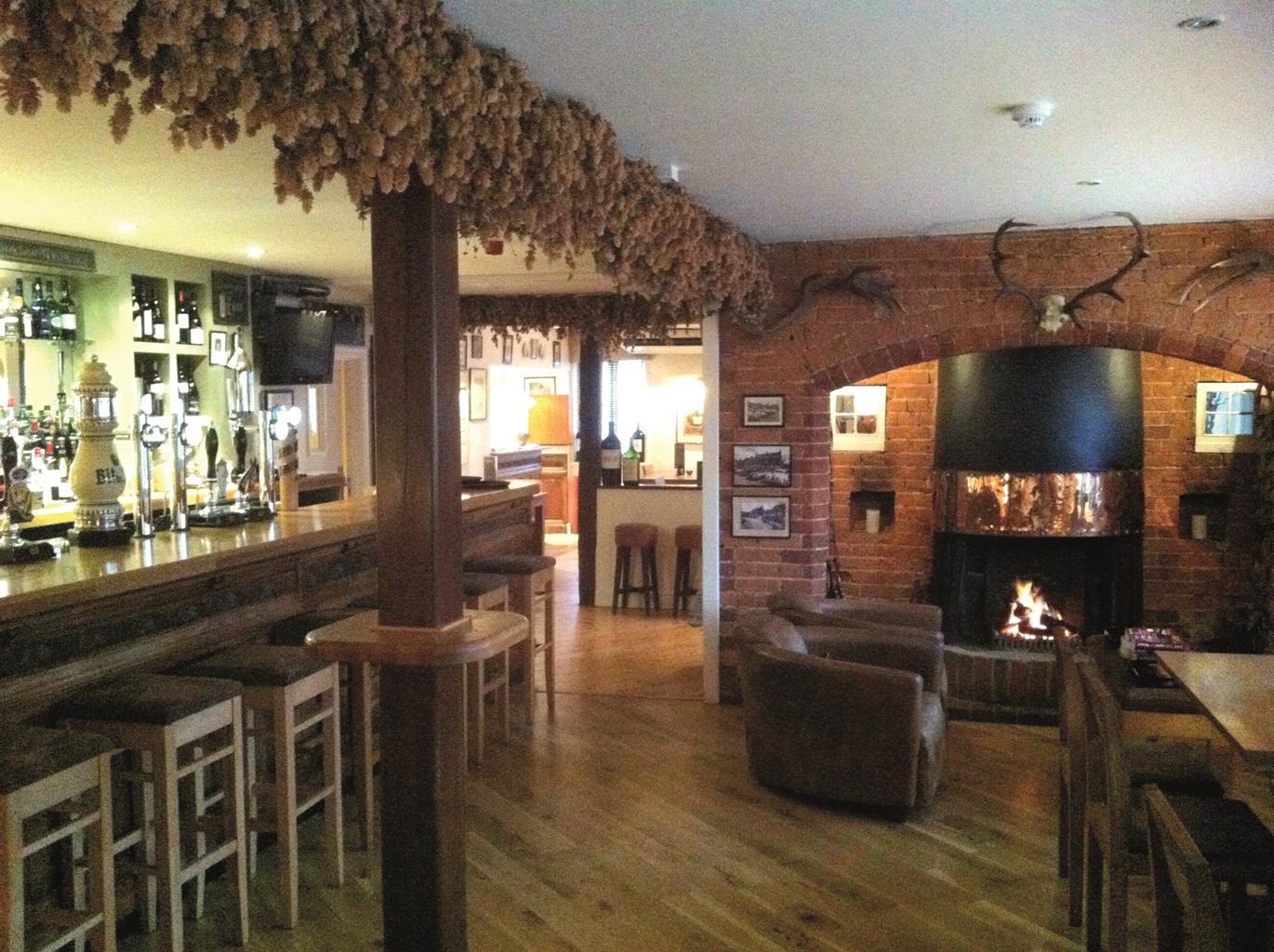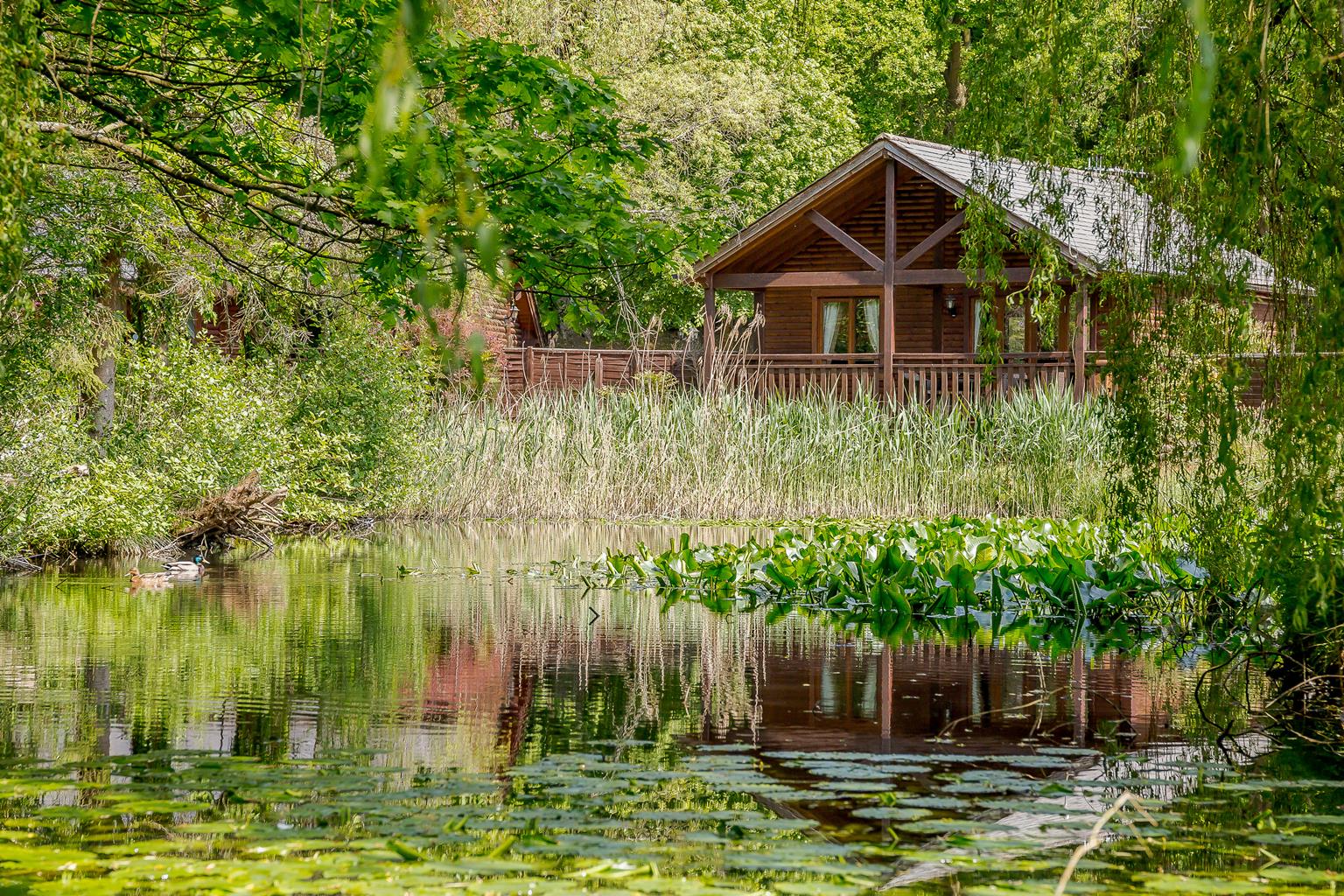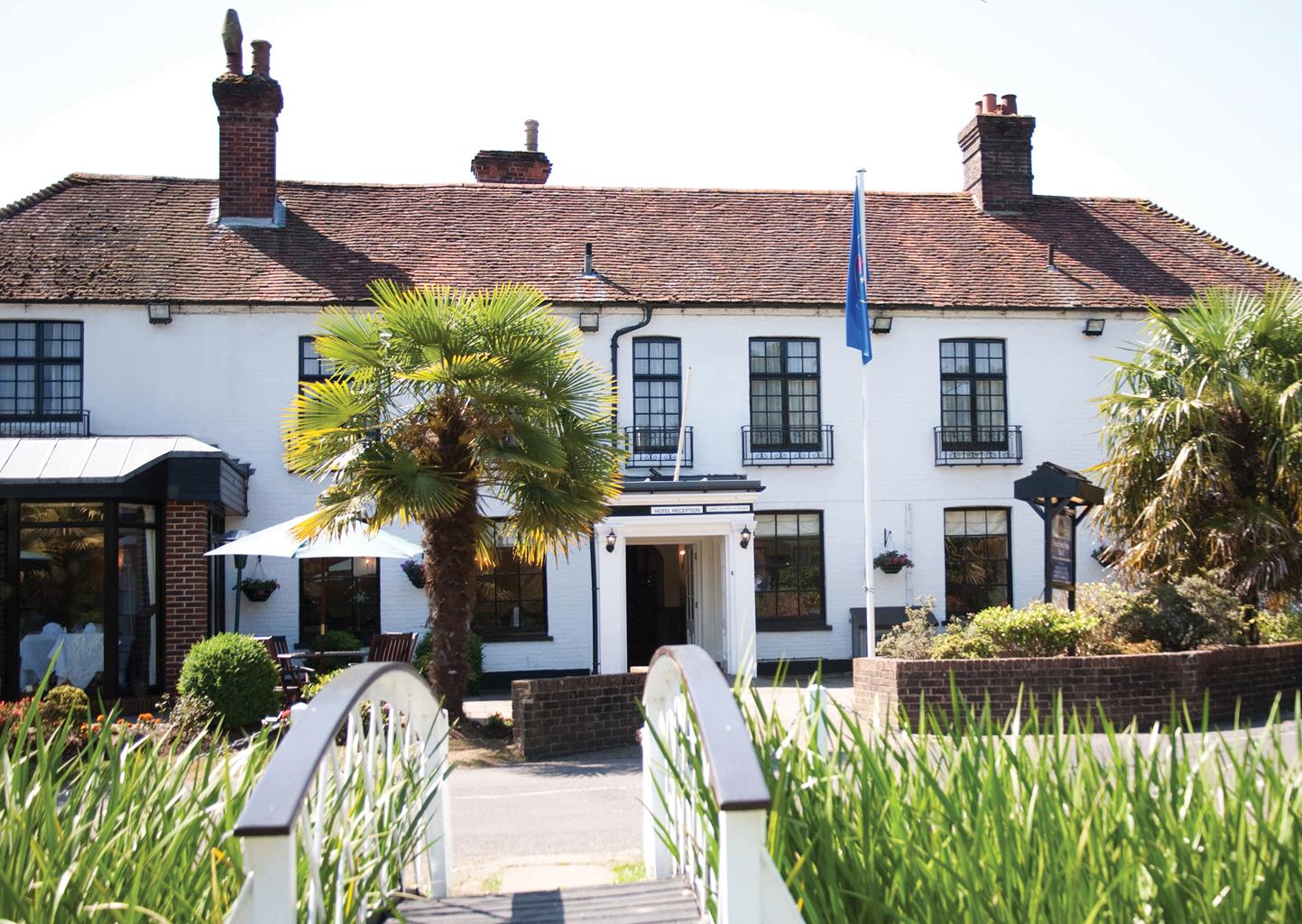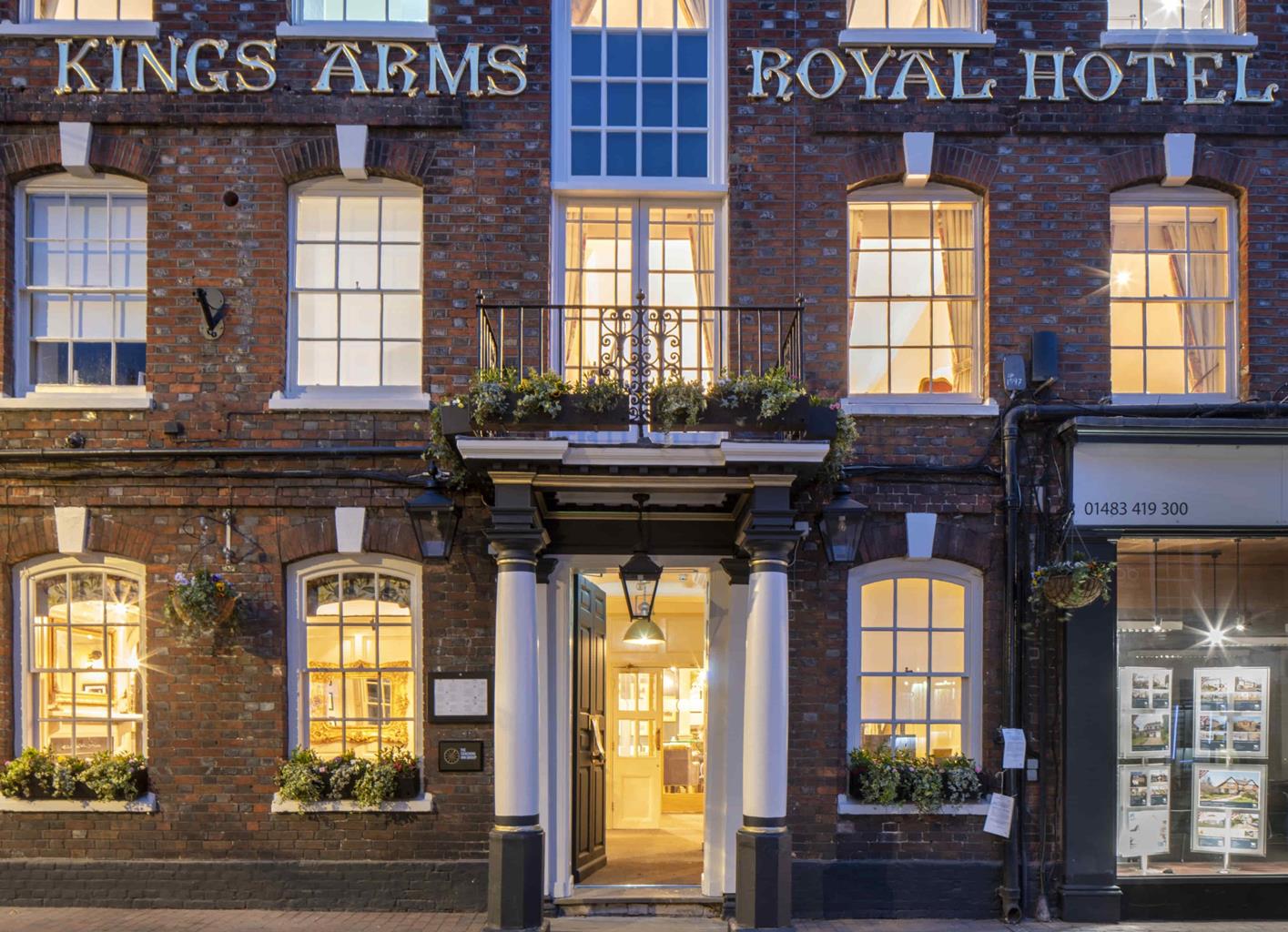Retreat to the woods when you stay in one of the log cabin style lodges at Tilford Woods. All…
Waverley and Tilford

Stroll by the enchanting ruins of Waverley Abbey in the Wey Valley
3.5 miles (5.7kms)
About the walk
The glory of this walk lies right at the start, just a stone’s throw across the fields from the car park. For over 400 years Waverley Abbey stood in this peaceful loop of the northern River Wey, and from here its abbots wielded huge religious and political influence. It all began in 1128 when William Gifford, Bishop of Winchester, founded Waverley on 60 acres (24ha) of farmland. This was the first Cistercian abbey in England, and the original community of 12 monks came with Abbot John from L’Aumône in France. They lived an austere life of manual labour and unceasing prayer.
Construction started at once, although it was another 150 years before the abbey church was finally completed. Meanwhile, the Cistercians expanded rapidly throughout Britain, and by 1132 there were great abbeys at Tintern, Fountains and Rievaulx. Waverley itself was the springboard for 13 new monasteries – in each case an abbot and 12 monks, representing Christ and his 12 disciples, went forward as the nucleus of the new community.
At Waverley, as elsewhere, the monks had an impact on the local economy as they converted the surrounding forests into grazing and arable fields. They began Surrey’s wool industry, and extended their hospitality from the humblest to the greatest. The lavish scale of monastic entertaining seems decadent, but these were exceptions to the harsh, everyday routine. Monks rose at 2am for Matins, spending their time in meditation, study and manual work before retiring as early as 5.30pm in winter. The day was punctuated by eight services, and by the midday meal. You’ll see the remains of the refectory with its 13th-century vaulting during your visit. Look, too, for the walls of the Chapter House, where the Abbot presided over the daily business meeting.
Of the church, only the ground plan and some parts of the chancel walls remain to give you an idea of the scale of the building. The monastic community continued until it was suppressed by Henry VIII in 1536. The estate changed hands many times. Inevitably, over the years the buildings were quarried for stone, and many wagon loads found their way into the construction of nearby Loseley House.
Walk directions
Turn right out of the car park, taking care to check for traffic, and follow Waverley Lane (B3001) as it crosses over Waverleymill Bridge. Continue for 200yds (182m) until the road bears to the left, before turning right onto the public byway.
Keep straight ahead and follow the path through a gate and past Friars Way Cottage, then through another gate to reach Sheephatch Lane. Turn left briefly, then right at the junction with Tilford Street; there’s no pavement for the first 400yds (366m), so go carefully. Now follow the road past the school and village shop, over the River Wey bridge and on to Tilford village green, where you’ll find the Tilford Oak and The Barley Mow pub.
To continue, retrace your steps across the river. Almost at once, turn left at the public bridleway sign, passing a pair of World War II pillboxes. The path climbs gently for 500yds (457m) and brings you to a tarmac lane. Turn left at a bridleway sign, pass some houses and continue up the narrow, sandy track straight ahead. At the top of the short slope, fork right at the public byway waymark for the 400yds (366m) climb to Sheephatch Farm. Cross Sheephatch Lane, where a public byway sign points your way up the gravelled track opposite. The track leads you confidently through Sheephatch Copse, and soon you’ll be dropping down on an ancient sunken way to rejoin your outward track at a public byway signpost.
Turn left here for the easy walk back to Waverley Lane (B3001). Watch out for the traffic as you turn left, then retrace your outward route over Waverleymill Bridge and back to the car park.
Additional information
Sandy and easy to follow, two sections on minor roads
Gently rolling, well-wooded countryside
Generally good, but lead essential along roads
OS Explorer 145 Guildford & Farnham
Small separate parking area next to the drive for Waverley House – turn in at signs for Waverley
None on route
WALKING IN SAFETY
Read our tips to look after yourself and the environment when following this walk.
Find out more
Also in the area
About the area
Discover Surrey
Surrey may be better known for its suburbia than its scenery, but the image is unjust. Over a quarter of the county’s landscapes are official Areas of Outstanding Natural Beauty, and along the downs and the greensand ridge you can gaze to distant horizons with hardly a building in sight. This is one of England’s most wooded counties, and has more village greens than any other shire. You’ll find sandy tracks and cottage gardens, folded hillsides and welcoming village inns. There’s variety, too, as the fields and meadows of the east give way to the wooded downs and valleys west of the River Mole.
Of course there are also large built-up areas, mainly within and around the M25; but even here you can still find appealing visits and days out. On the fringe of Greater London you can picnic in Chaldon’s hay meadows, explore the wide open downs at Epsom, or drift idly beside the broad reaches of the stately River Thames. Deep in the Surrey countryside you’ll discover the Romans at Farley Heath, and mingle with the monks at England’s first Cistercian monastery. You’ll see buildings by great architects like Edwin Lutyens and Sir George Gilbert Scott, and meet authors too, from John Donne to Agatha Christie.
Nearby stays
Restaurants and Pubs
Nearby experiences
Recommended things to do
Why choose Rated Trips?
Your trusted guide to rated places across the UK
The best coverage
Discover more than 15,000 professionally rated places to stay, eat and visit from across the UK and Ireland.
Quality assured
Choose a place to stay safe in the knowledge that it has been expertly assessed by trained assessors.
Plan your next trip
Search by location or the type of place you're visiting to find your next ideal holiday experience.
Travel inspiration
Read our articles, city guides and recommended things to do for inspiration. We're here to help you explore the UK.







